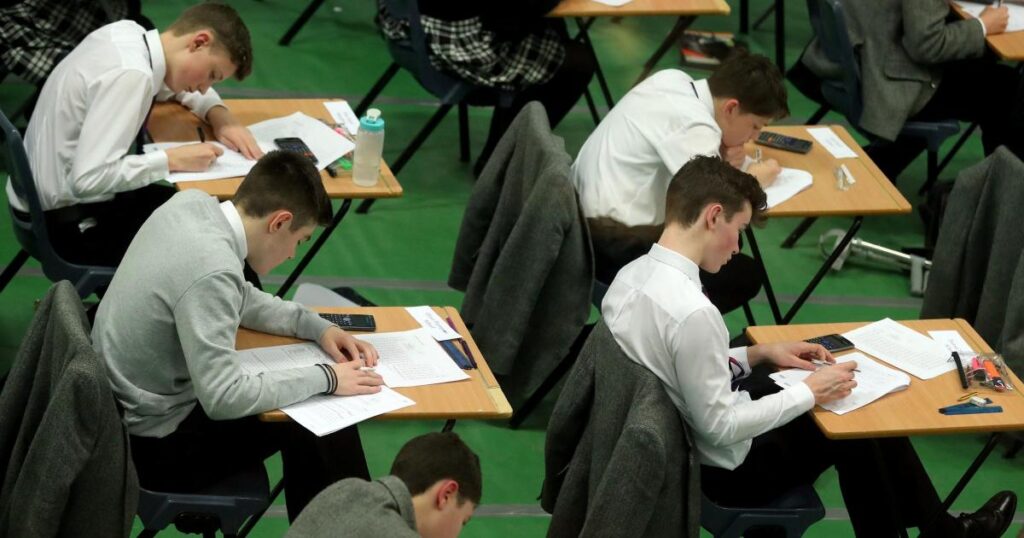They are set to replace Level 3 BTECs and other post-16 technical qualifications.
These vocational courses are meant to offer a third route alongside A-levels and T-levels for students.
Ministers are to set out plans for V-levels in a new white paper on post-16 education and skills, which will be published today (Monday, October 20).
🚨 NEW: The Government has announced V-Levels, which will replace 900 Level 3 qualifications available to Sixth Formers
V-Levels will be available with A-Levels and T-Levels
— Politics UK (@PolitlcsUK) October 19, 2025
The announcement comes after Sir Keir Starmer’s pledge to ensure that two-thirds of young people go to university or study a technical qualification after leaving school.
The Department for Education (DfE) has said the new qualification will replace the 900 vocational qualifications for 16 to 19-year-olds which are currently available alongside A- and T-Levels.
This is part of an effort to streamline the “confusing landscape” currently on offer and to give more flexibility to pupils.
When will V-levels be introduced and what can pupils study on them?
It is not yet clear when V-levels will be introduced or what subjects will be available to study on them.
However, the DfE gave craft and design and media, broadcast and production as examples.
Students will be able to study V-levels alongside their A-levels, unlike T-levels, which are equivalent to three A-levels.
Fernanda chose to do a T level to kickstart her career in digital 🤖
A T Level is equivalent to 3 A levels. Find a technical or vocational qualification to suit you 👉 https://t.co/7tpZuM6g3Y pic.twitter.com/oW34VF0HyV
— Department for Education (@educationgovuk) October 16, 2025
T-levels were introduced in 2020 and already offer a technical route for students.
However, the initial findings of a government-commissioned review said they shouldn’t be the only option, partly because of their high entry requirements.
Students study one T-level geared towards a specific occupation, whereas they might study three A-levels in different subjects.
Discussing the plan for the introduction of V-levels, Education Secretary Bridget Phillipson said: “Technical and vocational education is the backbone of this country’s economy and central to breaking the link between background and success, helping hundreds of thousands of young people get the skills they need to get good jobs.
“But for too long it has been an afterthought. Young people have been left to navigate an overcomplicated landscape and repeatedly labelled as ‘failures’ by a system that has held them back from all-important English and maths grades.
Classroom learning 🤝 real work experience.
T Levels are a blend of school or college and industry placement – and they’re equivalent to taking 3 A levels. 📚💻
This T Levels Week, visit the website to find out more 👇https://t.co/7tpZuM6g3Y pic.twitter.com/XeWPbloqfJ
— Department for Education (@educationgovuk) October 13, 2025
“Through our plan for change we are turning the tide.
“Our reforms are building a post-16 education system that truly matches young people’s aspirations and abilities, delivering the opportunity and growth our economy needs.”
The plans have been endorsed general secretary of the National Education Union (NEU), Daniel Kebede.
He said: “For too long, the post-16 qualifications framework has lacked coherence and clarity.
Recommended reading:
“While students following academic routes have benefited from a clear and structured pathway, those pursuing vocational options have too often faced a confusing and under-resourced system.
“These reforms present an important opportunity to deliver greater fairness, consistency and quality for all learners.”
Ministers are also due to set out plans for the funding of higher education in England, including setting university tuition fees.




